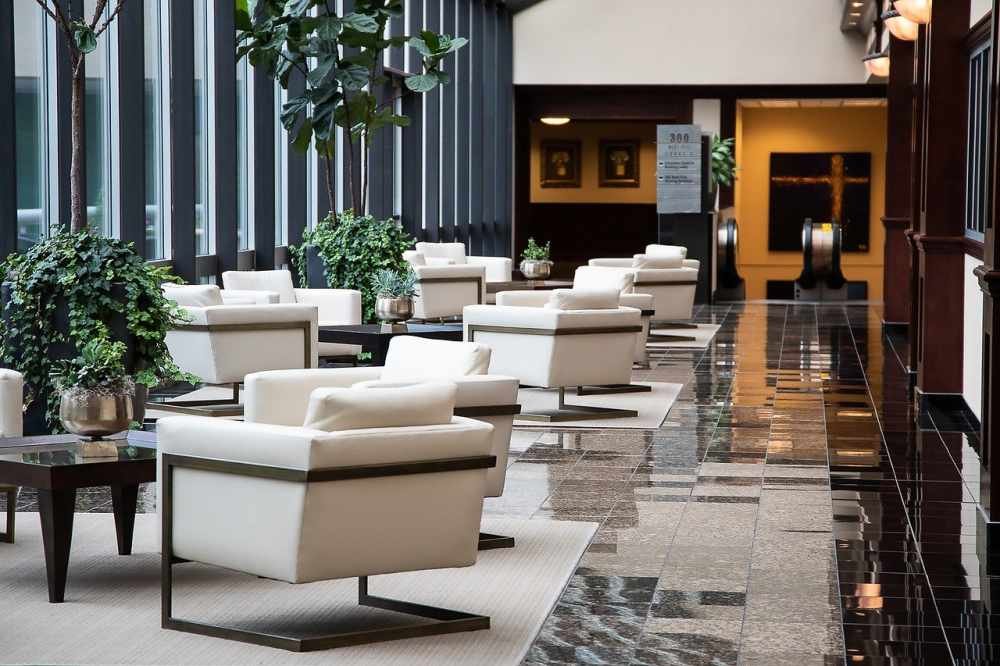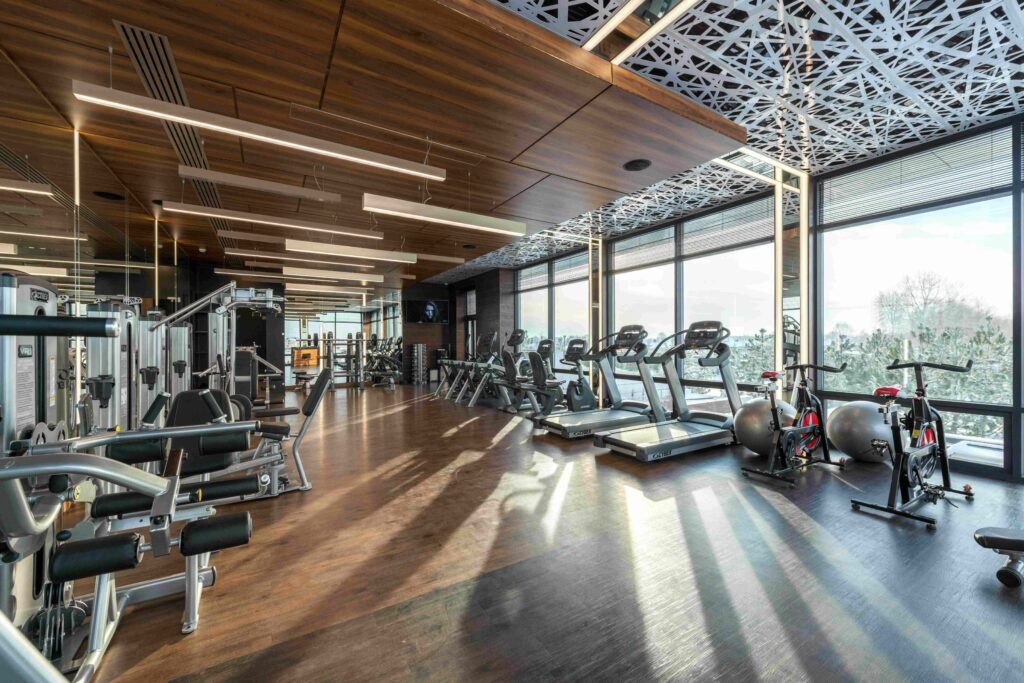Creating an inviting and functional gym interior design is crucial for attracting and retaining clients. A well-designed gym not only enhances the workout experience but also promotes a positive atmosphere that motivates members to achieve their fitness goals. In this article, we will explore essential aspects of gym interior design, focusing on layout, aesthetics, equipment arrangement, lighting, and more.

Gym Interior Design: Transforming Fitness Spaces for Optimal Performance
When designing a gym interior, it’s important to create a space that is both functional and visually appealing. Consider incorporating elements such as bright colors, motivational quotes, and modern equipment to inspire and energize gym-goers. Lighting plays a crucial role in setting the ambiance of the space, so make sure to have ample natural light and well-placed artificial lighting.
Another key aspect of gym interior design is creating designated areas for different types of workouts, such as cardio machines, free weights, and stretching areas. This helps to optimize the flow of the space and provide a seamless experience for users. Additionally, don’t forget about amenities like water stations, changing rooms, and storage areas to enhance the overall user experience at the gym.
The Importance of Thoughtful Gym Interior Design
Creating an Inspiring Atmosphere
A gym’s interior design plays a significant role in creating an inspiring atmosphere. The design should reflect the gym’s brand identity and values, whether it’s a hardcore weightlifting facility or a serene yoga studio. Incorporating motivational quotes, vibrant colors, and dynamic artwork can energize the space and encourage members to push their limits.
Maximizing Space Efficiency
Efficient use of space is essential in gym design. Properly planning the layout ensures that every square foot is utilized effectively, allowing for smooth traffic flow and minimizing clutter. This includes allocating specific areas for different types of workouts, such as cardio, strength training, and functional fitness.

Key Elements of Effective Gym Interior Design
1. Layout and Zoning
Strategic Zoning for Different Activities
Zoning the gym into distinct areas for different activities is fundamental. A well-organized layout enhances functionality and ensures that members can easily navigate the space. Consider creating separate zones for cardio machines, free weights, resistance training, and group classes. This separation helps to minimize distractions and provides a safer workout environment.
Optimizing Traffic Flow
Designing wide walkways and strategically placing equipment ensures smooth traffic flow. This reduces the risk of accidents and allows members to move comfortably between workout stations. Incorporating clear signage further aids in navigation, especially for new members unfamiliar with the gym’s layout.
2. Aesthetics and Ambiance
Color Scheme and Branding
Choosing the right color scheme is crucial for setting the tone of the gym. Bright, energetic colors like red and orange can stimulate activity and motivation, while cool tones like blue and green promote relaxation and focus. The color palette should align with the gym’s branding to create a cohesive and recognizable look.
Incorporating Natural Elements
Integrating natural elements such as plants, wood accents, and natural light can enhance the ambiance of the gym. These elements create a more inviting and pleasant environment, helping to reduce stress and improve overall well-being.
3. Lighting
Natural and Artificial Lighting
Proper lighting is vital in a gym setting. Maximizing natural light not only saves energy but also creates a more uplifting and welcoming atmosphere. Large windows and skylights can be used to bring in daylight. For artificial lighting, a combination of overhead lights, task lighting, and accent lighting can be employed to ensure the space is well-lit and visually appealing.
Adjustable Lighting for Different Zones
Different areas of the gym require different lighting solutions. Cardio zones may benefit from brighter, more intense lighting, while relaxation areas, such as yoga studios or recovery zones, should have softer, warmer lighting. Adjustable lighting systems can cater to these varying needs and enhance the overall experience.
4. Equipment Arrangement
Strategic Placement for Accessibility
The arrangement of gym equipment should prioritize accessibility and ease of use. Placing popular machines in easily accessible areas and arranging equipment in logical sequences can improve the workout flow. Ensure that there is enough space between machines for safe and comfortable use.
Incorporating Versatile Equipment
To maximize space, consider incorporating versatile equipment that can serve multiple functions. For example, adjustable benches, multi-functional cable machines, and modular storage solutions can save space and provide more workout options for members.
Enhancing Member Experience Through Design
1. Comfort and Safety
Ergonomic Design
Ensuring that the gym equipment and furniture are ergonomically designed is crucial for member comfort and safety. Comfortable seating, adjustable equipment, and anti-fatigue flooring can prevent injuries and enhance the overall workout experience.
Cleanliness and Maintenance
A clean and well-maintained gym is essential for member satisfaction. Incorporating easy-to-clean surfaces, providing ample cleaning supplies, and scheduling regular maintenance can keep the gym hygienic and in top condition.
2. Technology Integration
Smart Gym Solutions
Integrating technology into the gym can significantly enhance the member experience. This includes incorporating smart equipment that tracks performance, providing charging stations for devices, and offering Wi-Fi access. Digital displays can be used for virtual classes, workout tutorials, and motivational content.
Member Management Systems
Implementing efficient member management systems can streamline operations and improve member satisfaction. This includes easy check-in/check-out processes, online class bookings, and personalized workout plans.
Sustainable Gym Design
1. Eco-Friendly Materials
Sustainable Building Materials
Using eco-friendly building materials can reduce the environmental impact of the gym. Recycled materials, low-VOC paints, and sustainable flooring options contribute to a greener gym environment.
Energy Efficiency
Incorporating energy-efficient lighting, heating, and cooling systems can significantly reduce energy consumption. Solar panels, energy-efficient HVAC systems, and smart thermostats are excellent investments for a sustainable gym design.
2. Waste Reduction
Recycling Programs
Implementing recycling programs for gym waste, such as plastic bottles and packaging, promotes sustainability. Providing clearly labeled recycling bins encourages members to participate in waste reduction efforts.
Water Conservation
Installing water-saving fixtures and promoting water conservation practices can help reduce the gym’s water footprint. This includes low-flow showers, faucets, and encouraging members to use reusable water bottles.
Conclusion
Designing a gym that balances functionality, aesthetics, and sustainability is key to creating a space that members will love. By focusing on layout, lighting, equipment arrangement, and incorporating natural elements, you can transform any gym into an inspiring and efficient fitness haven. Thoughtful design not only enhances the workout experience but also promotes safety, comfort, and well-being.